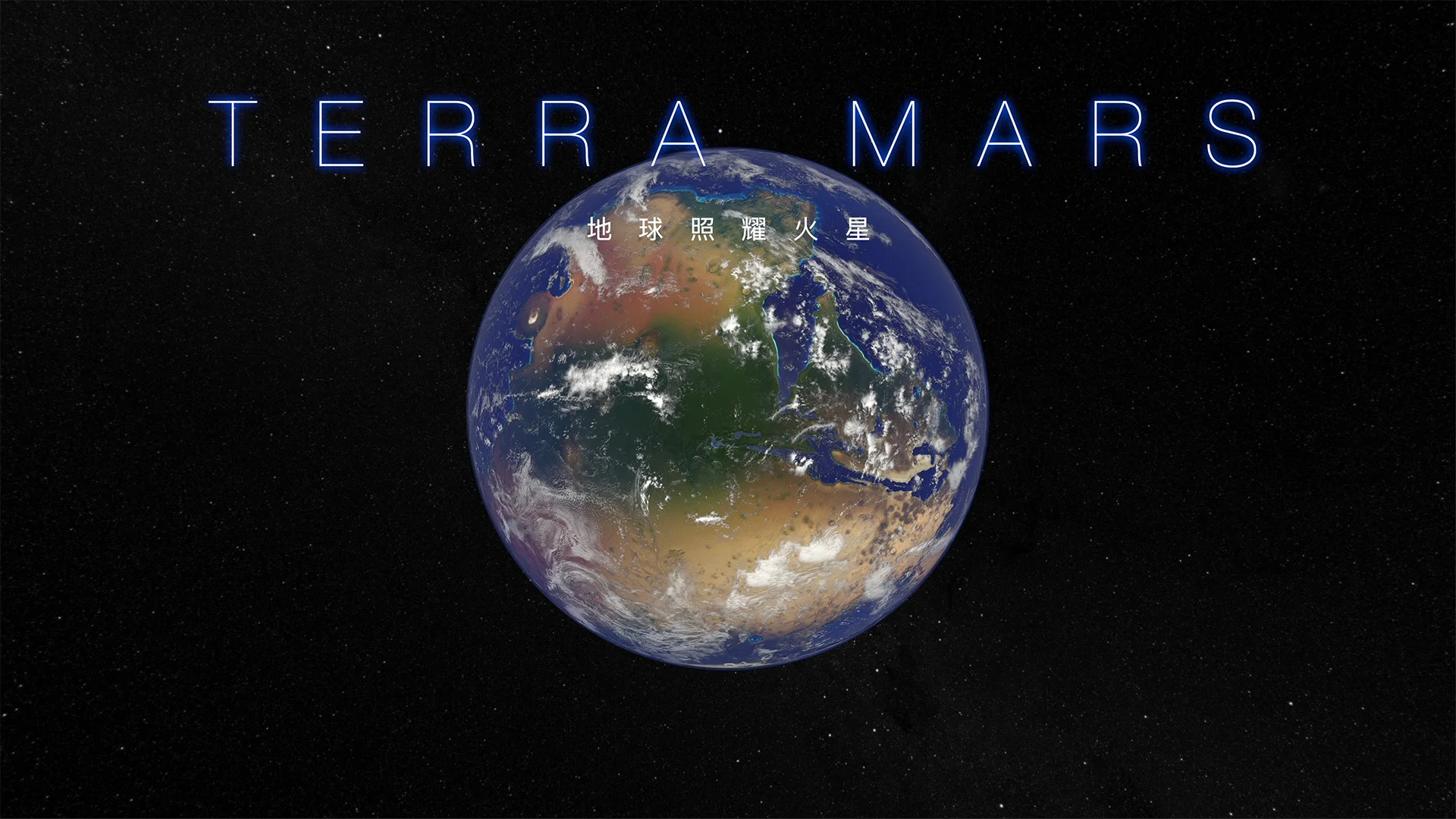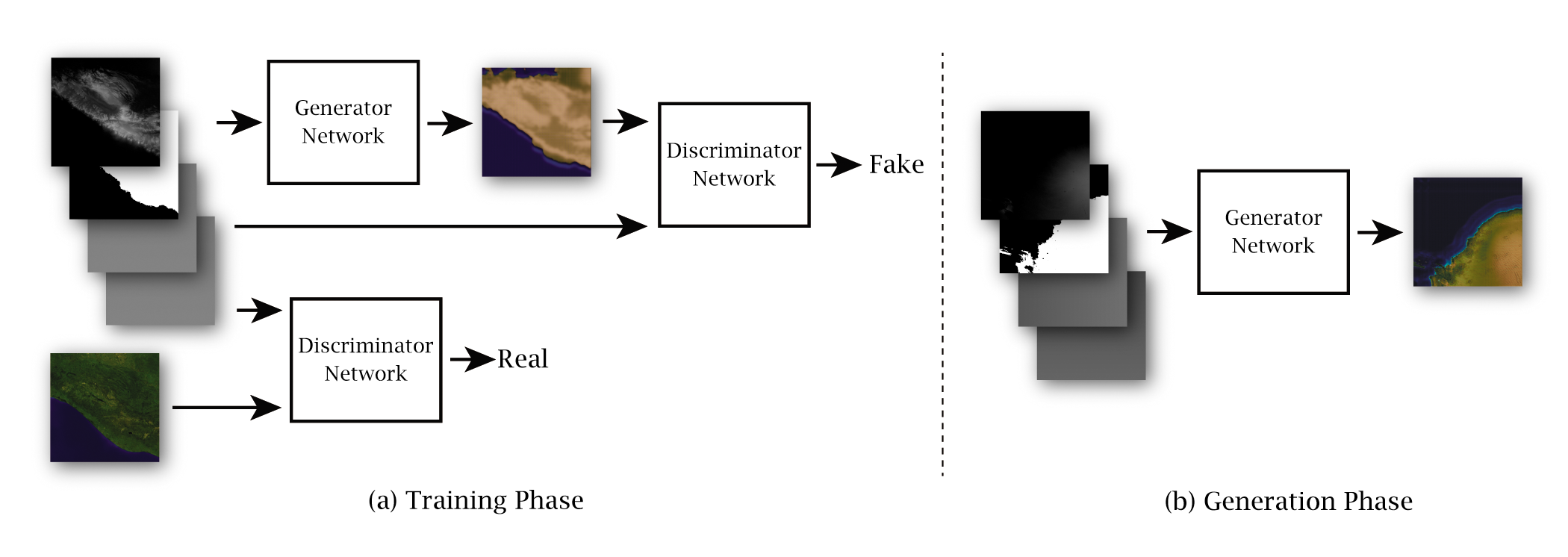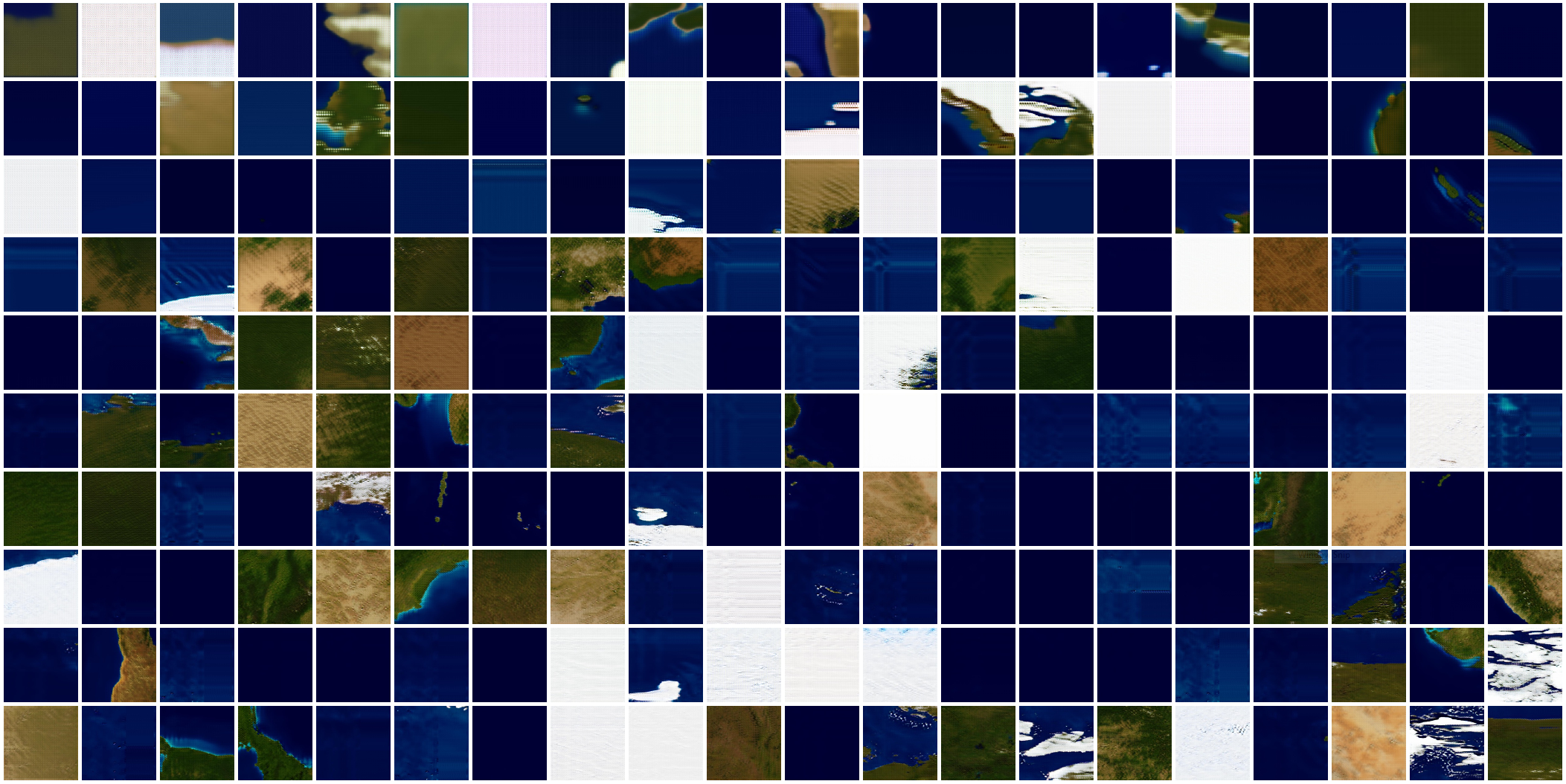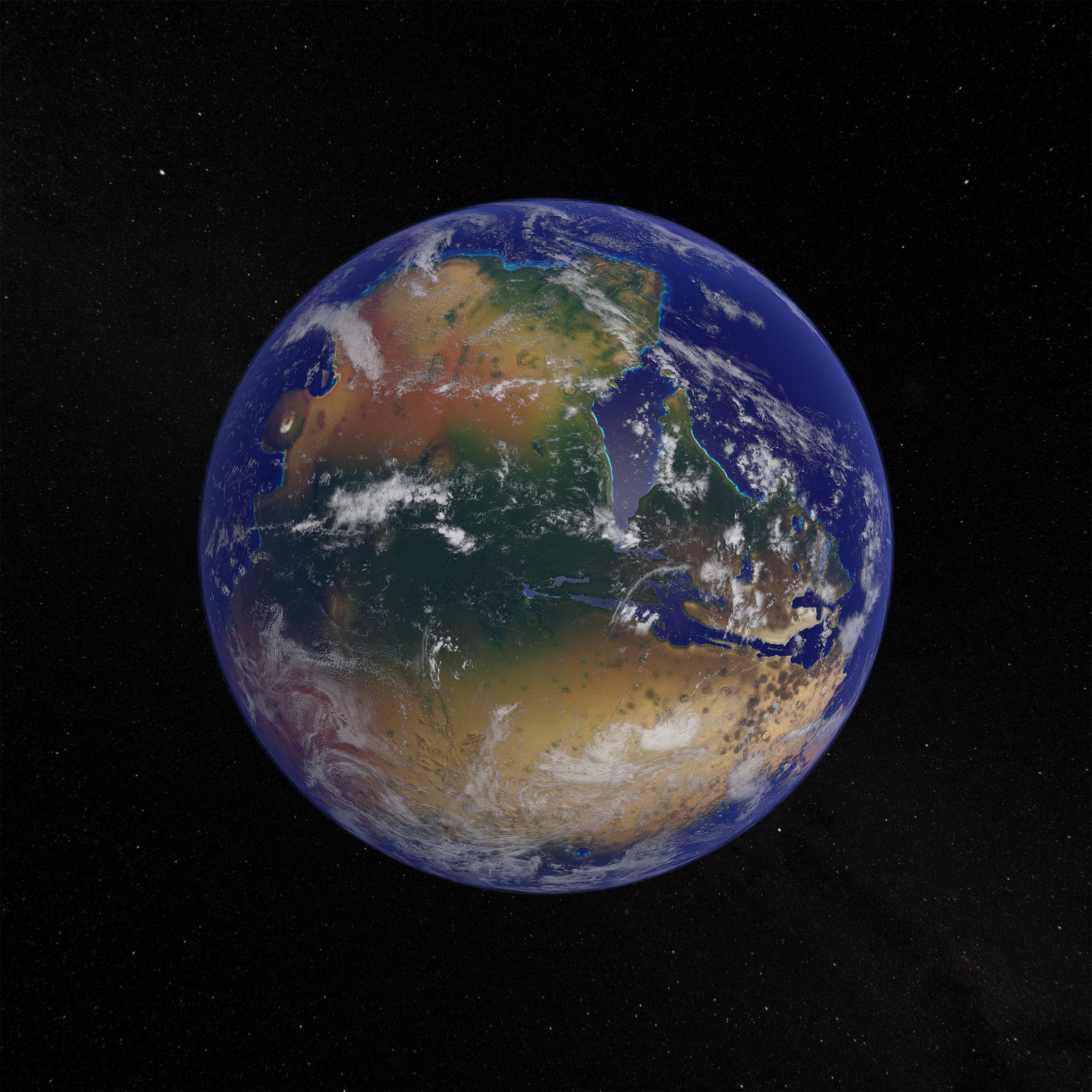Terra Mars · 地球照耀火星
“When Earth shines on Mars through AI’s imagination...”
Ever since humankind was able to look back to Earth from space, the view of the "blue planet" seems to provoke a contemporary type of nostalgia and inspire poetic reflection. Images of Mars could arouse quite the opposite—the feeling of otherness, the realization of our loneliness in the universe. What I present here are artistic renderings of Mars with visual reference to our very own planet Earth. For this project, I have trained an artificial neural network with topographical data and satellite imagery of Earth so that it can learn the relation between them. The trained model was then applied to topographical data of Mars to generate images that resemble satellite imagery of Earth. Terra Mars suggests a new approach to creative applications of artificial intelligence—using its capability of remapping to broaden the domain of artistic imagination.
The generated global texture is extra high-resolution—consists of nearly a billion pixels, it enables gallery-quality rendering of the generated Mars as a globe, as a detailed map, and even as close-ups that the audience can dive into.
Terra Mars Generation 73
2019.
Cover Image: Western Hemisphere of Terra Mars Generation 73. Centered at the enormous canyon system Valles Marineris, also featuring some or Mar's tallest mountains including Olympus Mons—the tallest planetary mountain in the Solar System.
Eastern Hemisphere of Terra Mars Generation 73
2019.
Cover Image: Eastern Hemisphere of Terra Mars Generation 73. Featuring the gigantic lake Hellas Basin in the southwest, and the volcano island Elysium in the northeast.
A Map of Terra Mars Generation 73
2019. Labeled with landing sites of all successful Mars landers by 2018.
A space-station view when flying through some of the landmarks of the western hemisphere of Terra Mars generation 73.
If images of our planet arouse people's poetic emotions, would an alien planet that resembles our own arouse the same feelings or different ones? You are welcomed to interpret Terra Mars from various perspectives. You can enjoy it as a playful remix of the two planets, or you can relate this imaginary version to the astronomical facts of the "red planet." Maybe you consider it as a preview of a possible outcome of human's terraforming efforts, or you just appreciate the sheer beauty of a planet that resembles our own.
To me, the most intriguing aspect of this AI-based creative approach is the seemingly contradicting assessments we can make of the generated Mars imagery—based on the astronomical facts of Mars, the generated look of it is by no means scientific, but on the other hand, it is created by inferring solid logic learned from precise data by a meticulous and tireless artificial intelligence. The AI has learned every corner of the Earth terrain for hundreds of times and applied its knowledge to every decision during its generation of the Martian terrain. This is not an approach that can be carried out by a human artist alone.
Therefore, I would like to claim that AI is the new imagination. Its unique capabilities such as remapping between domains should inspire and support artists to create artworks the world has never seen.
Terra Mars Series
Terra Mars is the first project in a series. Projects in the series includes:
Notes
Generation: A Terra Mars or Martian Earth generation refers to the results of applying the trained model to the full dataset of Mars or Earth topography, and stitching the output into a global color map. The process usually but not always includes training a new model. The generations are numbered in chronological order.
Exhibitions
Compass—Navigating the Future. May 27, 2019—2024. Ars Electronica Center, Linz.
"Weather the Weather" a SciArt Initiative exhibition at the New York Hall of Science. September 10, 2019—January 10, 2020.
The 5th Art and Science International Exhibition and Symposium. November 2-30, 2019. National Museum of China, Beijing.
SUBMERGE. December 15, 2019—January 30, 2020. Science Gallery Bengaluru.
Shenzhen Bay STArts Festival—the Final Prophet. December 26, 2020—January 26, 2021. MixC Shenzhen Bay.
Art: Key to Conflict Resolution. June 27—July 27, 2022. Municipal Art Gallery, Thessaloniki.
FILE – Electronic Language International Festival. July 13—August 28, 2022. Galeria de Arte do Sesi, São Paulo.
Annihilation. May 19—August 11, 2023. SNAP, Shanghai.
Installation view at Science Gallery Bengaluru.
Publications
Weili Shi. "Terra Mars: When Earth Shines on Mars through AI's Imagination," Leonardo, Volume 52, Issue 4, August 2019.
Presented at SIGGRAPH 2019 on July 30, 2019 in Los Angeles.
Neural Network Model Reference
P. Isola, et al. "Image-To-Image Translation With Conditional Adversarial Networks," Proceedings of IEEE Conference on Computer Vision and Pattern Recognition 2017, 5967–5976.
T. C. Wang, et al. "High-Resolution Image Synthesis and Semantic Manipulation with Conditional GANs," Proceedings of the IEEE Conference on Computer Vision and Pattern Recognition 2018, 8798–8807.
Data Credits
"Blue Marble: Next Generation," (NASA, 2005).
"Blue Marble," (NASA, 2002).
"Mars HRSC MOLA Blended DEM Global 200m v2," (U.S. Geological Survey, 2017).
"Viking Global Color Mosaic (MDIM1 controlled) 925m," (U.S. Geological Survey, 2001).
Asset Credits
Clouds texture: "Blue Marble," (NASA, 2002).
Night lights texture: "Black Marble 2016," (NASA, 2017).
Stars texture: "Deep Star Maps," (NASA, 2012).








